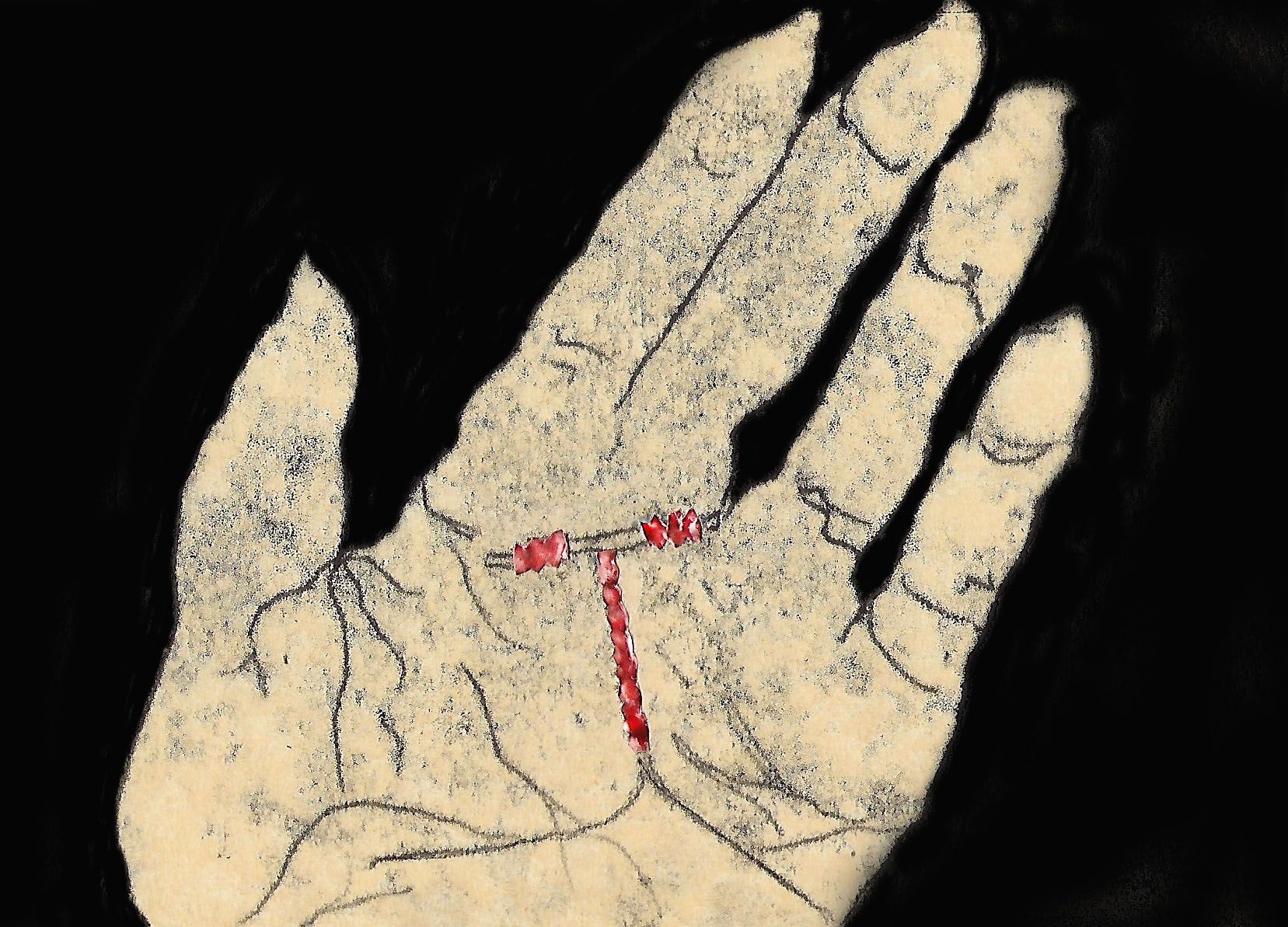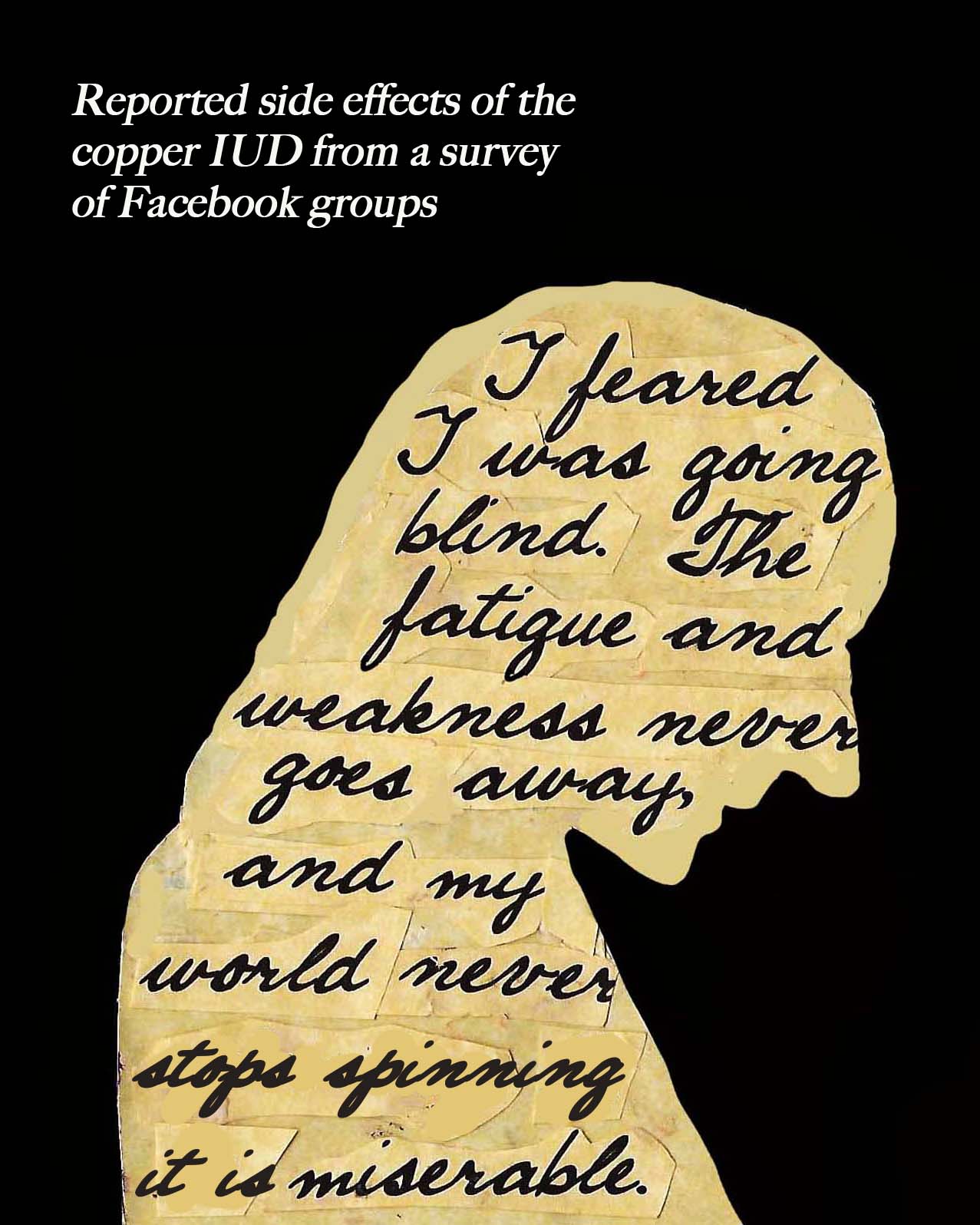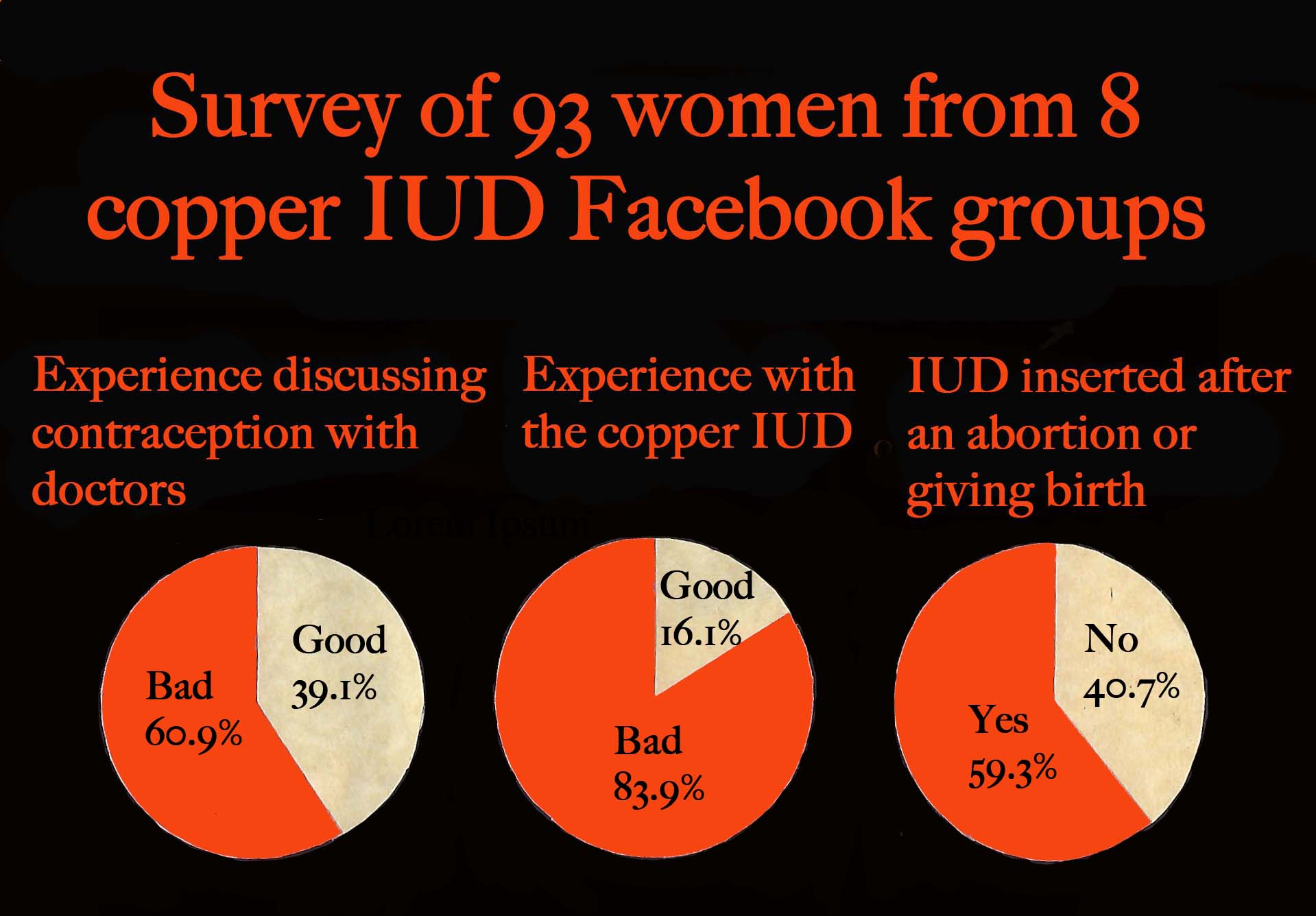The hidden danger of the copper IUD
By Helen Brown

When Olivia Bowden was 20 she was pressured into having an abortion by her abusive partner.
Her doctor recommended fitting the copper IUD immediately after the procedure, as an effective contraceptive.
“And 25 years later, I've always had the coil. Every seven years, I would get it replaced, and never questioned once whether it was the cause of the migraines and anxiety that I’ve had my whole life," said Olivia, who lives in Greenwich.
When Olivia became vegan in early 2020, her migraines increased from monthly to four times a week.
She said: “When I have a migraine, I lose my ability to see. I can't remember my name, I can't remember how to get home if I'm out.”
She was put on a series of medications to relieve the migraines, including injections of steroids and painkillers into her neck, but nothing worked.
In her job at the Shaw Trust, Olivia helped people with mental health difficulties get back into work while her own sanity rapidly deteriorated.

In September, she had a nervous breakdown. She woke up unable to do anything but stare at the wall for what seemed like an eternity. Holed up in her room and unable to go to the supermarket, she ate staple foods and waited desperately for it to pass.
“I felt drunk when I got up in the morning. It was like somebody had taken the spirit level away from me, and everything was on its side. It made me feel like life was not being truthful to me, and maybe the truth was that the world is really on its side, and I was seeing it for the first time," she said.
She suffered from panic attacks and memory loss, and her brain stopped being able to comprehend simple things like reading the time.
“I thought I was getting schizophrenia, or Alzheimer’s. I started hearing voices in my head. It was always two men chatting to each other, kind of like TV or radio presenters, but I couldn't quite make out what they were saying,” she said.
In October, a friend mentioned that she needed to get her IUD removed soon, which prompted Olivia to consider her own IUD.
Researching online, she recognised the symptoms of copper toxicity—migraines, vertigo, schizophrenia—and got her IUD removed the next day.
Her doctor dismissed the possibility that she had copper toxicity, saying it was extremely rare.
To prove it to herself, she got a hair test and a specific blood test which measures ceruloplasmin, a protein that carries copper in the bloodstream, which confirmed her suspicion.

Copper toxicity and the IUD
The copper IUD is a non-hormonal form of birth control which many women choose to avoid the risk of mood swings, anxiety and depression associated with hormonal contraceptives.
The Medicines and Healthcare products Regulatory Agency (MHRA) has received three complaints of suspected copper toxicity from the IUD over the last two years.
In a statement, MHRA said: “The information currently available in the literature points to the copper IUD being a safe and effective method of contraception.”
This does not appear to match many women’s experiences. There are multiple copper IUD toxicity support groups on Facebook, the largest with 6,500 members.
Only a handful of studies have been conducted testing the copper levels of women with the copper IUD, most of which test for copper using blood tests.
Rick Fischer began researching copper toxicity after his fiancé’s health dramatically declined five months after her copper IUD was put in.
He said: “It destroyed her health, it destroyed our relationship and family, and I threw my life into trying to understand what happened to her. As I dove into research, I began hearing stories of many other women who had been through similar.”

Fischer is now one of Canada’s leading Hair Tissue Mineral Analysis (HTMA) practitioners, and is at the forefront of raising awareness about copper toxicity.
Blood tests, Fischer explains, are ineffective in measuring the body's overall copper level. Blood quickly removes excess toxins and minerals, some of which are excreted in urine, while the rest remain stored in the body’s cells and tissues.
Even when measuring hair tissues, copper levels can appear deceptively low. However, when copper is stored too tightly within the body to detect, the balance of other minerals in the HTMA can reveal a pattern indicating copper toxicity, Fischer explains.
Paragard, which manufactures copper IUDs, warns that women should not use the copper IUD if they have a copper allergy, however there is no mention of the risk of copper toxicity.
Copper levels can rise from drinking water carried in copper pipes, from eating foods high in copper such as nuts and leafy greens, or even from inheriting high copper levels at birth.
The copper IUD is a contributing factor which can tip the balance of a woman’s copper levels into toxicity.

The vegan diet which Olivia went on before her health swiftly deteriorated is high in copper. As Fischer explains, vegetarian and vegan diets are high in phytates which lessen zinc absorption, causing copper levels to rise.
Additionally, these diets are low in taurine, a primarily meat-based amino acid needed to produce bile to help excrete copper from the body.
Fischer says: “Initially, copper gives a person energy. But over time, the excess accumulation leads into increasing fatigue and brain fog, then depression and anxiety, possible panic attacks, all the way down the spectrum to severe psychosis, paranoia, schizophrenia, and even suicide.”
Fischer points out that most doctors rule out the possibility of the non-hormonal IUD as the culprit because they are educated to connect mental health issues with hormones, not minerals.
Dr Michael Gormley, a retired GP, said: “The copper coil probably wouldn’t even cross my mind because there's so many other reasons why people get physical or emotional symptoms. And it's so difficult when you get emotional symptoms knowing is it life, or is it chemical?”
The IUD is commonly fitted immediately after an abortion or after giving birth, and the volatile symptoms of copper toxicity can be indistinguishable from those of postpartum depression or of distress following an abortion.

Recovery
Symptoms of copper toxicity can worsen as copper is purged from the body, and Fischer estimates that recovery can take around six months to two years.
Olivia asked to be referred to an NHS specialist for copper toxicity. She says she was told that toxicity arising from the IUD is not enough of a mainstream problem to be covered by the NHS.
With Fischer’s advice, she has now undergone three months of purging copper, and her symptoms have reduced to nausea and dizziness with a migraine every couple of weeks.
Recently, she has been able to enjoy simple pleasures like taking a walk in the morning and meditating before work, which were beyond her reach for the last year.
She says: “If it had carried on, I definitely wouldn't be here by now. I would have just taken my life in the end. When you can't support yourself financially, emotionally or physically, that’s scary, isn’t it?”
Olivia has resolved to live life to the fullest. “I'm going get a tattoo, I’m going to get a mullet, I’m going to go travelling on my own because I've never been brave enough to do it. I'm just going to live life to the max.”




